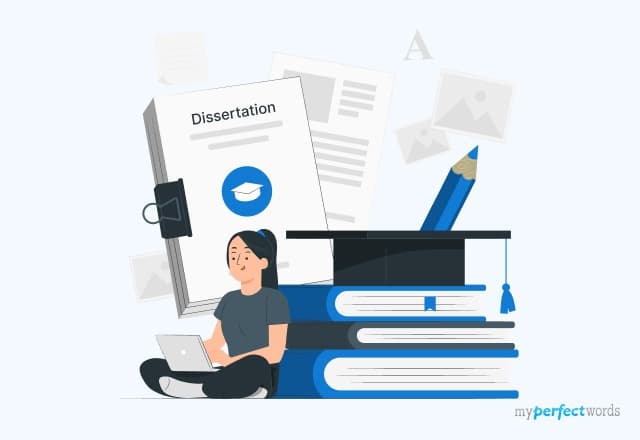Are you feeling overwhelmed by the thought of starting on your dissertation writing journey? You're not alone.
Writing a dissertation can be one of the most challenging and rewarding experiences of your academic career. As students, it's natural to have questions, uncertainties, and perhaps a touch of anxiety about this substantial undertaking.
But fear not!
In this comprehensive guide, we'll walk you through every step of the dissertation writing process. We aim to provide you with the knowledge, tips, and examples you need to write a perfect dissertation.
So, let's dive in and transform your dissertation project!
On This Page![]()
- 1. What is a Dissertation?
- 2. Structuring a Dissertation
- 3. How to Write a Dissertation?
- 4. Dissertation Template
- 5. Dissertation Format
- 6. Dissertation Example
- 7. Dissertation Writing Tips
- 8. Dissertation Topics
What is a Dissertation?
A dissertation is a substantial and original research project required for the completion of advanced degrees, typically at the master's or doctoral level.
It is the form of writing in which in-depth research takes place to study the chosen topic. In this academic assignment, the writing skills of a writer are thoroughly tested.
Dissertation Committee and Prospectus
The dissertation committee plays a pivotal role in the ABD (All But Dissertation) status. This stage occurs when students finish coursework but haven't started writing their dissertations.
The committee, usually consisting of advisors and experts, helps refine the dissertation prospectus. This document outlines research goals, methods, and objectives.
Structuring a Dissertation
A dissertation structure varies by field and discipline, reflecting the distinct demands of each area of study. In the humanities, dissertations often resemble lengthy essays. These projects necessitate compelling arguments supported by evidence from external sources.
In contrast, the sciences and social sciences typically adopt a more standardized format. They include sections like introduction, literature review, methodology, results, and discussion.
Business and engineering fields often prioritize practical applications, incorporating case studies and data analysis.
Regardless of the field, all dissertations share a common thread: they are in-depth, original investigations. The figure below represents a basic dissertation structure:

How to Write a Dissertation?
Writing a dissertation demands perfect planning and a systematic approach. As a graduate student, you need to follow a structured writing process to craft an impactful dissertation.
In this section, we will walk you through the essential steps involved in both the planning and writing phases.
I. Dissertation Planning
Let’s take a look at the steps involved in the planning process of the dissertation writing:
- Choosing a Research Topic: Selecting an appropriate research topic is the initial crucial step. Ensure it's aligned with your interests and the scope of the project is manageable.
- Creating a Hypothesis/Thesis Statement: Develop a clear and concise thesis statement or hypothesis. It should define the purpose and direction of your research.
- Developing an Outline: Create a comprehensive outline that serves as a roadmap for your dissertation. This should include the main sections and subtopics you plan to cover.
- Selecting a Research Methodology: Determine the research methodology that best suits your project. Whether qualitative, quantitative, experimental, or ethnographic, this choice should align with your research question.
- Conducting Research: Gather relevant sources and data that support your research. Take detailed notes, and make sure to maintain a record of your sources.
II. Writing Your Dissertation
Now that we've discussed the importance of the planning phase, let's dive into the actual process of writing a dissertation. In this section, we'll outline the order in which to approach your dissertation and provide a detailed explanation of each step.
1. Dissertation Title Page:
The title page is the first page of your dissertation, serving as a formal introduction to your work. It is typically one of the most straightforward sections.
- Center the title of your dissertation at the top of the page.
- Below the title, add your full name, indicating your authorship.
- Mention your institutional affiliation, which usually includes the name of your university.
- Include the date of submission, which is typically the month and year when you submit the dissertation.
2. Acknowledgments (Optional):
This section is an expression of gratitude to individuals and institutions who have supported you throughout your research journey. While optional, it is considered courteous.
- Start by thanking your dissertation advisor, acknowledging their guidance and support.
- Mention colleagues, friends, or family members who have contributed to your academic and personal growth.
- Express appreciation to any institutions or organizations that provide research grants or access to resources.
3. Abstract:
The abstract is a concise summary of your entire dissertation. It is a critical section as it provides readers with a quick overview of your research's purpose, methodology, findings, and implications.
- Summarize your research question, explaining its relevance.
- Briefly outline your research methodology.
- Highlight key findings and their implications.
- Keep the abstract within a word limit, typically 150-250 words.
4. Table of Contents Page(s):
The table of contents provides an outline of your dissertation, including chapter titles, section headings, and page numbers.
- List the main chapters and subsections in a hierarchical order.
- Include page numbers to help readers easily navigate your work.
- Ensure the table of contents is kept up-to-date as you write and edit your dissertation.
5. Introduction:
The introduction serves as the gateway to your dissertation. It provides context, introduces the research topic, explains its significance, and presents your research question and objectives.
- Begin by introducing the topic and providing background information.
- Clearly state the research question or hypothesis.
- Explain the relevance of your research to the broader academic or practical context.
- Outline the structure of the dissertation to provide a roadmap for readers.
6. Literature Review:
The literature review is a critical section where you explore existing research related to your topic. It involves analyzing, summarizing, and critiquing relevant sources to provide context for your own research.
- Begin by highlighting the current state of research in your defined area.
- Identify any gaps or unresolved issues in the existing literature.
- Connect your research to the broader theoretical and methodological context.
- Depending on the field, consider including sub-sections such as methodological, theoretical, and practical contexts if they apply.
7. Methodology:
In the methodology section, you describe how your research was conducted. This includes the methods of data collection, tools used, and the approach you've taken to analyze the data.
- Specify whether your research was qualitative, quantitative, experimental, ethnographic, or another method.
- Explain how data was collected, such as through interviews or surveys.
- Describe the tools used for data analysis and your method of interpretation.
- Justify your choices by explaining why your chosen methodology is suitable for your research question.
8. Results:
This section is where you present your research findings clearly and logically. Depending on your field, it may involve a separate chapter for results or a combined section with discussion.
- Present your findings in an organized manner, using tables, figures, charts, and narratives as appropriate.
- Follow the conventions of your field regarding the style of reporting results (e.g., scientific dissertations separate results and discussion).
- Decide the order in which you'll present your results and how you'll allocate word space among different findings.
9. Discussion:
In the discussion section, you analyze your results in the context of the existing literature. It's an opportunity to acknowledge any limitations and discuss the implications of your findings.
- Review and critique your results in comparison to the expanded context provided by the literature review.
- Address any limitations and consider how they may affect the validity of your results.
- Discuss the broader implications of your research and its contribution to the field.
- Articulate areas for future research that stem from your work.
10. Conclusion:
The conclusion is the closing chapter where you summarize key points and restate your thesis or research question. It provides a clear understanding of the significance of your work.
- Summarize the main findings of your research.
- Restate your thesis statement or research question.
- Discuss the limitations of your research.
- Offer recommendations for future research on the same topic and emphasize your research's importance.
11. Bibliography or Reference List:
This section is where you list all the sources cited in your dissertation, following a specific citation style guide such as MLA, APA, or Chicago.
- Ensure that all references are accurate and complete.
- Follow the citation style consistently throughout your dissertation.
- Arrange the sources alphabetically.
12. Appendices:
The appendices contain supplementary materials such as survey questions, interview transcripts, and additional data. It's important to clarify whether appendices count toward the word limit.
- Organize appendices in a clear and coherent manner.
- Clearly label each item in the appendices.
- If there are word count limitations, check with your institution's guidelines regarding whether appendices are included.
Dissertation Template
Here's a sample template for structuring a dissertation:
Dissertation Format
Adherence to these formatting guidelines ensures your dissertation appears professional and complies with academic standards. Here are some general formatting instructions for the dissertation:
- Language of the Dissertation: Most dissertations are written in the language of the institution. Ensure clarity and precision in your writing.
- Length: Dissertation lengths vary but typically range from 150 to 300 pages. Follow your institution's guidelines.
- Page and Text Requirements: Use standard A4 or letter-sized pages. All text, including footnotes, should be double-spaced.
- Page Size: Ensure your dissertation adheres to the standard page size specified by your institution.
- Spacing: Maintain consistent double spacing throughout the document for ease of reading.
- Fonts and Point Size: Follow the recommended font style and size, typically 12-point.
- Recommended Fonts: Commonly used fonts include Times New Roman, Arial, or Calibri.
- Body of Text, Tables, Figures, and Captions: Maintain consistency in font and point size for the main text, table content, and figure captions. Typically, use the same font as the main text.
Dissertation Example
Understanding a dissertation process will be difficult if you have not gone through the examples before. To craft a piece of writing, it's essential to study examples to grasp the structure of the writing process.
Here is a list of dissertation examples for you:
- Example#1 Tools for Quantifying Bacterial Motility Using Digital Holographic Microscopy as Applied to Studying the Simulated Microgravity Environment (Jacqueline Marie Acres' dissertation delves into the application of digital holographic microscopy to study bacterial motility and its relevance in simulated microgravity environments.)
- Example#2 Organizational Readiness Assessment for Fraud Detection and Prevention: Case of Airlines Sector and Electronic Payment (Sultan Ayed Alghamdi's dissertation focuses on assessing the readiness of organizations, particularly in the airline sector, to detect and prevent fraud in electronic payment systems.)
- Example#3 Examining Factors Impacting the Service Needs of Unhoused Women (Holly Brott's dissertation investigates the various factors that influence the service needs of unhoused women, shedding light on the challenges they face and the support required.)
- Example#4 A Policy Proposal for Agricultural Data Governance (Ana Sofía Castellanos Santamaría presents a policy proposal aimed at governing agricultural data, addressing the critical need for structured governance in the agricultural sector.)
- Example#5 Realization of Multi-Valued Logic Using Optical Quantum Computing (Sophie Choe's dissertation explores the practical application of optical quantum computing for the realization of multi-valued logic, advancing the field of quantum computing and its potential uses.)
Here are some sample PDF dissertations to help you get inspired:
If you want to explore more examples visit and read our dissertation examples blog!
Dissertation Writing Tips
Let’s take a look at some expert nuggets for dissertation writing in research:
- Trim the Excess: Focus on quality content over quantity. Keep your dissertation concise and relevant.
- Chunk Your Writing Time: Break down the writing process into smaller, manageable tasks. It's easier to tackle sections bit by bit than to face the entire dissertation at once.
- Feedback Loop: Seek early feedback from peers and mentors. Fresh perspectives can uncover blind spots and strengthen your work.
- Eyes on the Prize: Maintain a clear structure. Each section should contribute directly to your argument. Stay on target to avoid meandering.
- Regular Recess: Taking breaks is essential. Don't burn yourself out. Short breaks boost productivity and mental clarity.
- Smooth Transitions: Make sure your dissertation flows seamlessly. Work on the connections between paragraphs and sections for better readability.
- Revise and Revise: Don't underestimate the value of revision. The more you polish, the shinier your dissertation will be.
- Good Company: Surround yourself with a support system. Share your progress and struggles with friends who can offer encouragement and motivation.
- Edit Mindfully: Pay close attention to detail. Grammar, punctuation, and formatting are the finishing touches that make your dissertation shine.
- Practice, Practice, Practice: Prepare for your defense well in advance. Rehearse your presentation, anticipate questions, and build confidence.
These tips are designed to help you navigate the dissertation writing process more effectively while maintaining a practical, tip-focused tone.
Dissertation Topics
If you haven’t decided on a topic, here is a list of dissertation topics you can choose from.
- Impact of Artificial Intelligence on Healthcare
- Sustainable Urban Planning and Smart Cities
- Climate Change Mitigation Strategies
- Online Learning and Its Effects on Traditional Education
- Cybersecurity in the Age of Digital Transformation
- Mental Health in the Workplace
- Innovations in Renewable Energy Technologies
- Social Media Influence on Political Discourse
- Crisis Management and Communication in a Global Pandemic
- Blockchain Technology and Its Applications in Finance
Need more good ideas? Check out our dissertation topics blog to get inspired!
To Sum it Up!
In this blog, we've covered all the fundamentals of crafting a flawless dissertation. If you find yourself in need of expert assistance, don't hesitate to reach out to MyPerfectWords.com.
We are a dedicated academic writing service, catering to all your writing requirements.
Whether you're seeking aid with crafting a dissertation proposal or completing an entire dissertation, you can rely on our dissertation writing service.
Besides, you can contact us any time of the day. Just call do my essay for me and we'll assure you with the best results from top professionals!
Frequently Asked Question
Which is the hardest part of dissertation writing?
The hardest part of the dissertation is writing the literature review. It is also the most important part because it tells what has been done before and what needs to be done next.

Write Essay Within 60 Seconds!
Use our AI tool to generate high quality essay-18976.png&w=256&q=75&dpl=dpl_7deDiunioHBwnGGEzFkCftFutUcJ)
WRITTEN BY
Amanda K.
UPenn English grad completing academic assignments. I deliver quality work across subjects and formats.
Keep reading
Dissertation vs. Thesis - Differences & Similarities

Extensive Dissertation Topic Ideas for Valuable Research
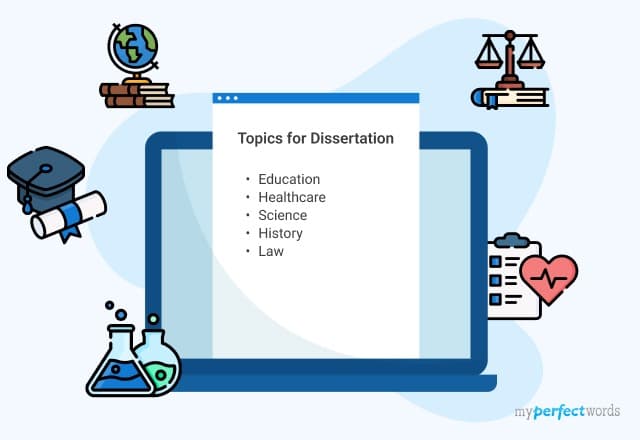
Dissertation Structure - A Complete Guide on Layout
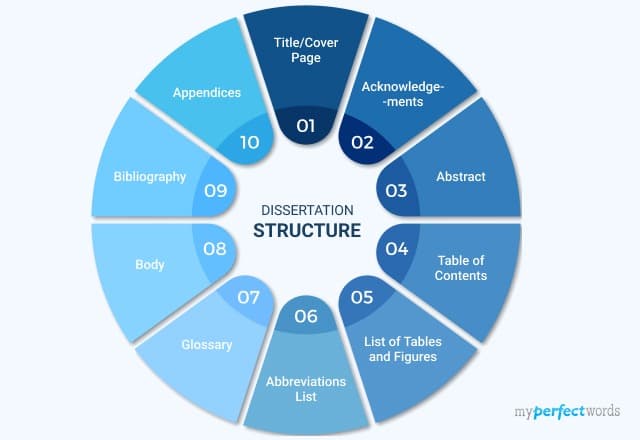
Dissertation Proposal: Writing Guide & Examples

Easy Dissertation Examples for All Students
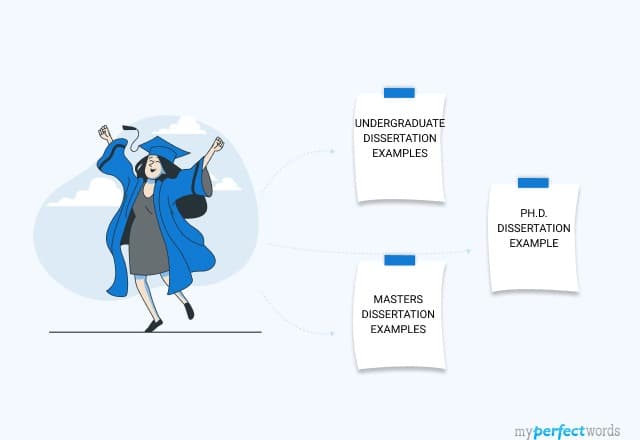
How to Cite a Dissertation in Different Citation Styles

Write Dissertation Introduction With Expert Tips
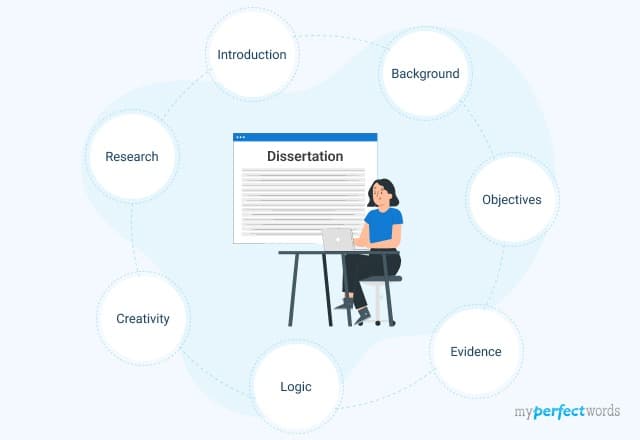
Dissertation Abstract Writing - A Quick Guide


